Abstract
In the moth Samia cynthia ricini, timing of the release of prothoracicotropic hormone is controlled by a circadian clock in the cephalic organ (brain); while this hormone release is necessary for gut purge, the final timing of this event is controlled by a circadian clock in the prothoracic glands that gates release of ecdysone. The photoreceptor of the prothoracic gland clock(s) is extraocular and evidently in the glands themselves. Demonstration that the clock and its photoreceptor are in the prothoracic glands is based on a mixture of localized illuminations and the transplantation of glands from one larva to another.
Keywords: circadian rhythm, photoreceptive site, larval-prepupal development, ecdysone release timing
Full text
PDF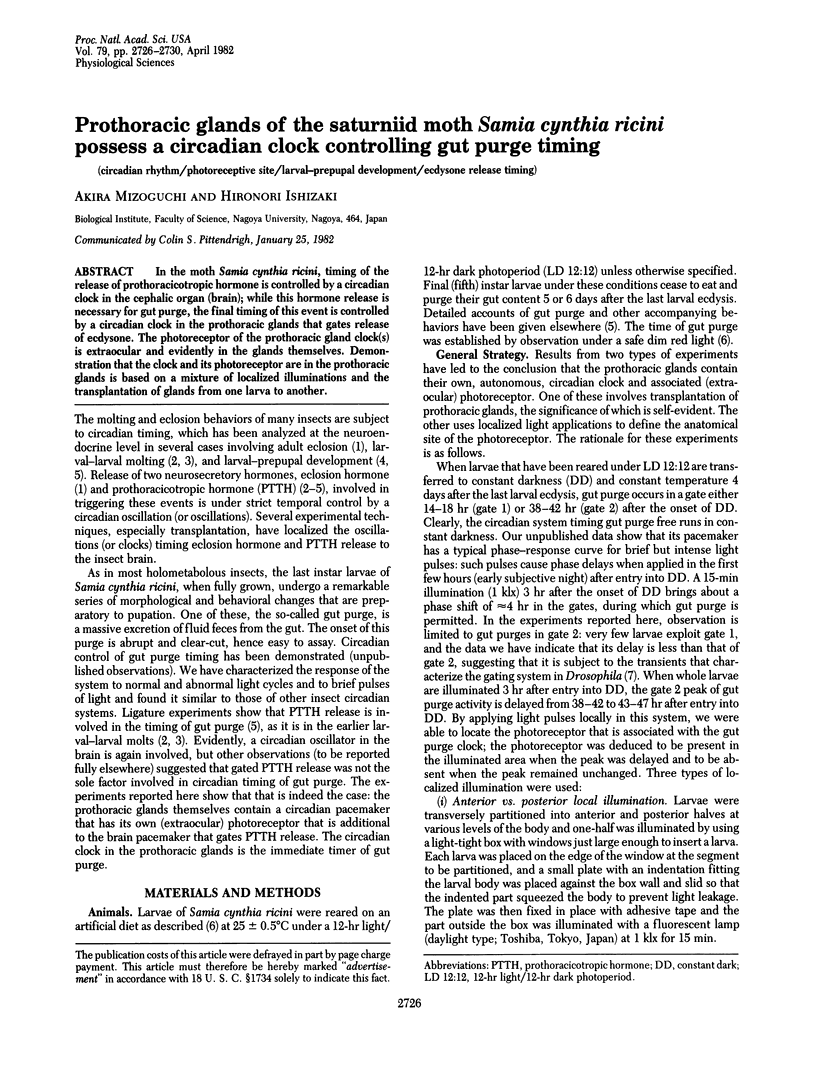
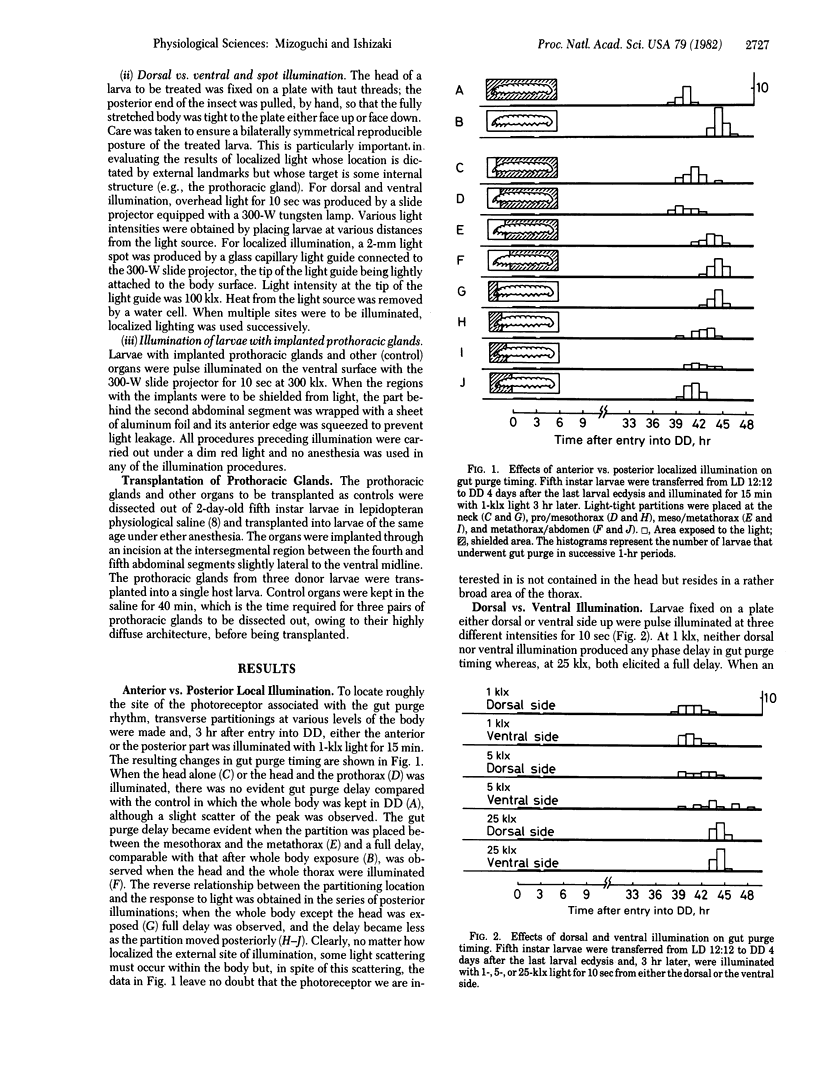
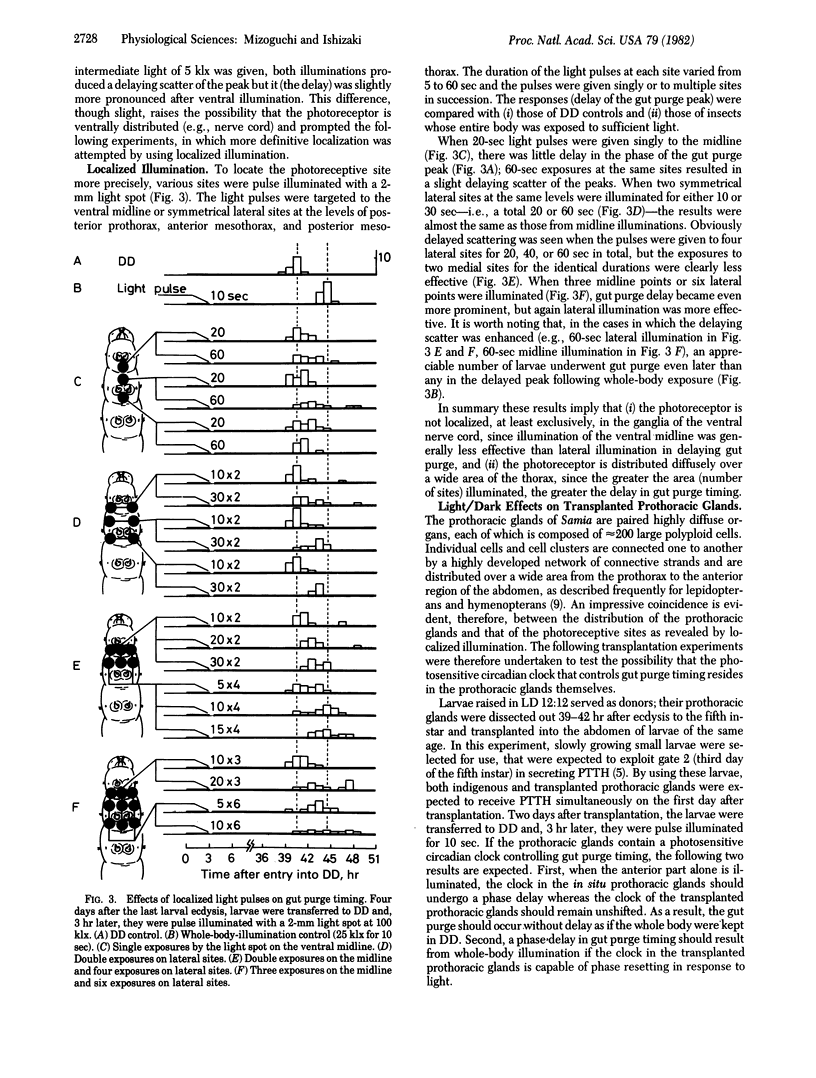
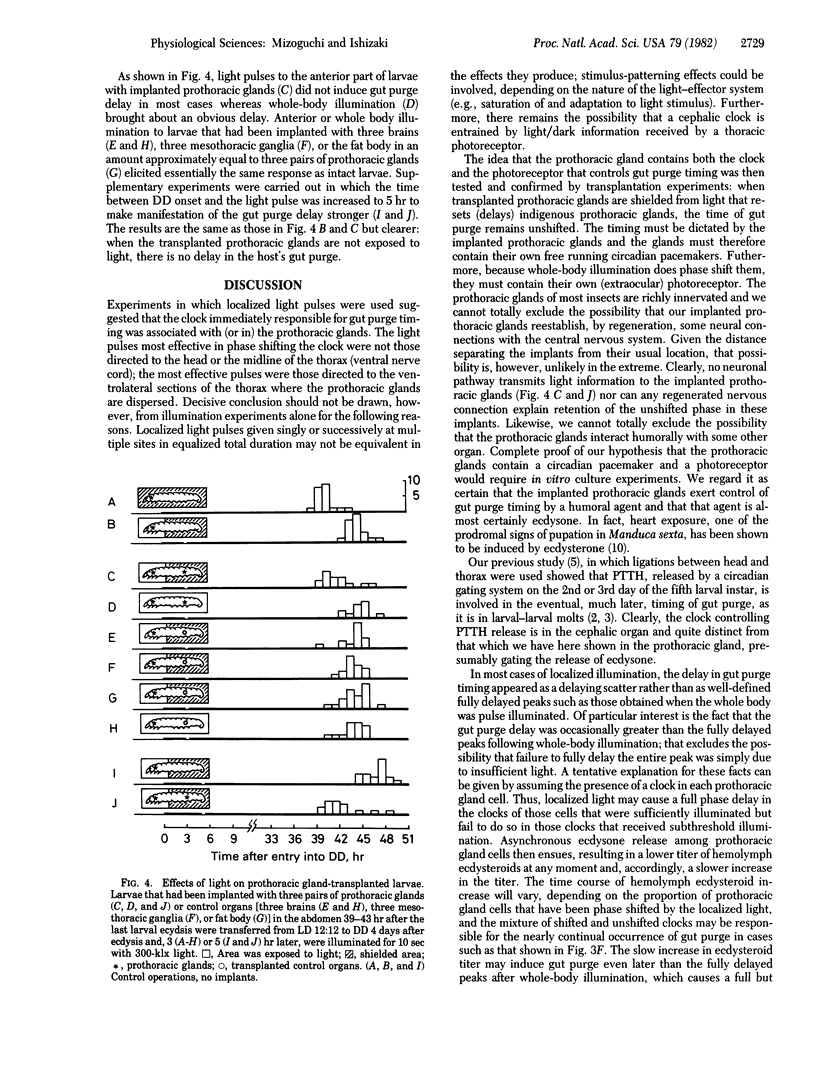
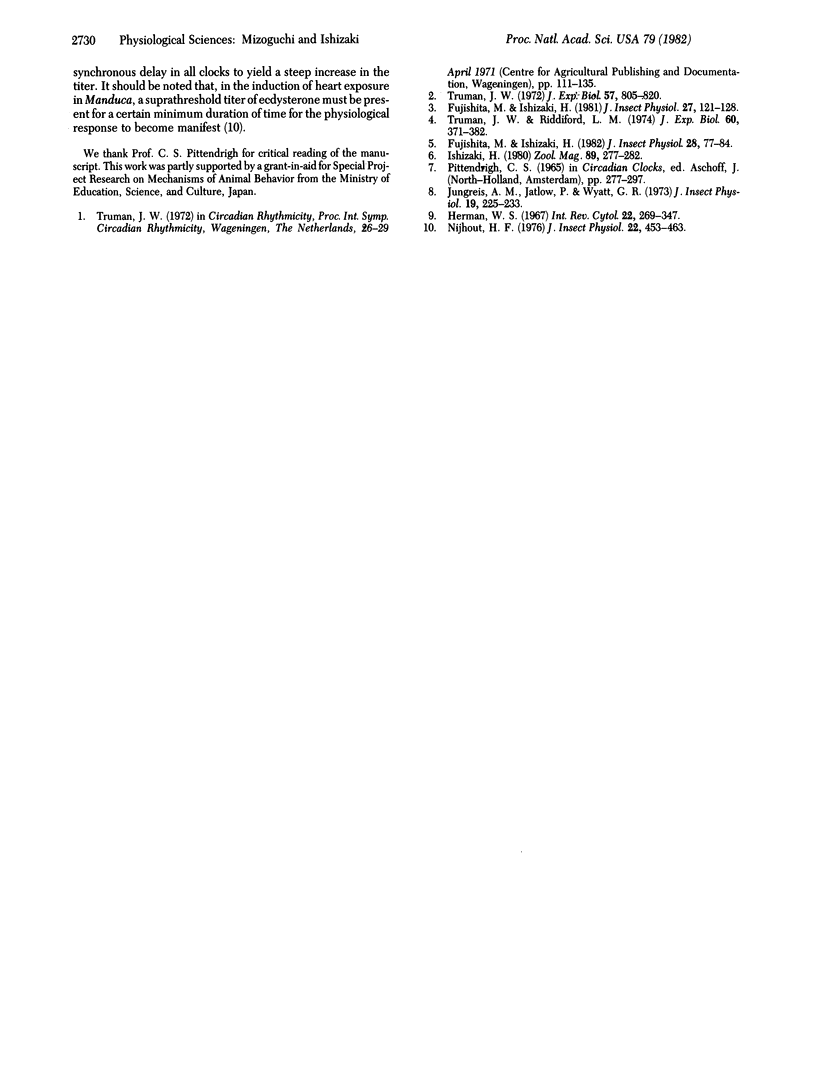
Selected References
These references are in PubMed. This may not be the complete list of references from this article.
- Herman W. S. The ecdysial glands of arthropods. Int Rev Cytol. 1967;22:269–347. doi: 10.1016/s0074-7696(08)61838-0. [DOI] [PubMed] [Google Scholar]
- Jungreis A. M., Jatlow P., Wyatt G. R. Inorganic ion composition of haemolymph of the cecropia silkmoth: changes with diet and ontogeny. J Insect Physiol. 1973 Jan;19(1):225–233. doi: 10.1016/0022-1910(73)90235-7. [DOI] [PubMed] [Google Scholar]
- Truman J. W., Riddiford L. M. Physiology of insect rhythms. 3. The temporal organization of the endocrine events underlying pupation of the tobacco hornworm. J Exp Biol. 1974 Apr;60(2):371–382. doi: 10.1242/jeb.60.2.371. [DOI] [PubMed] [Google Scholar]


